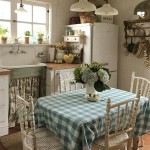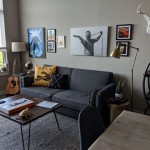Home Decor Ideas 2025: Living Room Trends
The living room, a central gathering place for families and individuals alike, is constantly evolving in its design aesthetic. As we approach 2025, several key trends are emerging that will redefine how we approach living room decor. These trends are not merely about fleeting aesthetics; they reflect a deeper societal shift towards sustainability, personalization, and a desire for spaces that promote well-being.
The coming years will see a greater emphasis on creating living rooms that are multi-functional and adaptable to the diverse needs of modern life. This means careful consideration of furniture choices, color palettes, and the integration of technology to ensure the living room serves as a space for relaxation, entertainment, work, and social interaction.
Biophilic Design and Natural Elements
One of the most prominent trends expected in 2025 is the continued rise of biophilic design. This design philosophy emphasizes the connection between humans and nature. It incorporates natural elements into the interior space to promote a sense of calm, reduce stress, and enhance overall well-being. Expect to see living rooms increasingly infused with natural light, indoor plants, and materials sourced directly from the environment.
The use of large windows to maximize natural light will be prioritized. Sheer curtains or blinds will be used to diffuse the light and create a soft, inviting atmosphere. The placement of plants, both large and small, will be strategic, acting as natural air purifiers and visual focal points. These could range from potted trees in corners to hanging plants cascading from shelves.
Materials such as wood, stone, and bamboo will gain prominence. These materials should ideally be sustainably sourced, contributing to the overall eco-conscious approach of the design. Wooden furniture with visible grain patterns will be favored, as will stone accents on walls or fireplaces. The textures of these materials will be emphasized to create a tactile and engaging environment.
Color palettes will be influenced by nature, featuring earthy tones such as greens, browns, beiges, and muted blues. These colors create a sense of grounding and tranquility, reflecting the natural world outside. Accent colors can be introduced through the use of plants, artwork, or textiles, adding pops of brightness without disrupting the overall calming atmosphere.
Water features, though less common due to practical considerations, may also find their way into high-end living room designs. Small indoor fountains or aquariums can introduce the soothing sounds and visuals of water, further enhancing the biophilic design principles.
Personalized Comfort and Multi-Functionality
The concept of "personalized comfort" is another key element of living room design in 2025. This goes beyond simply choosing comfortable furniture; it involves creating a space that reflects the individual's personality, lifestyle, and needs. The emphasis is on creating a living room that is not only aesthetically pleasing but also functional and adaptable to various activities.
Modular furniture will be highly sought after, allowing for easy reconfiguration of the space based on changing needs. Sofas with adjustable sections, coffee tables with hidden storage, and seating arrangements that can be easily rearranged will be popular choices. This flexibility ensures that the living room can be quickly transformed from a relaxation zone to a workspace or an entertainment area.
Customization will play a significant role. Homeowners will increasingly seek out furniture and decor items that can be tailored to their specific preferences. This could include choosing the fabric and dimensions of a sofa, commissioning custom artwork, or designing bespoke storage solutions. The goal is to create a living room that is truly unique and reflective of the individual's taste.
Technology integration will be discreet and seamless. Smart home devices will be incorporated into the design in a way that enhances functionality without being visually intrusive. Lighting systems that can be controlled remotely, sound systems that are integrated into the walls, and smart TVs that blend seamlessly into the decor will all be common features. The focus will be on creating a connected home that is easy to use and enhances the overall living experience.
Storage solutions will be both practical and stylish. Clutter will be minimized through the use of built-in shelving, hidden compartments, and multi-functional furniture. The goal is to create a space that is organized and visually appealing, allowing the homeowner to relax and unwind without being surrounded by unnecessary distractions. Storage will be considered an integral part of the design, rather than an afterthought.
Sustainable Materials and Ethical Consumption
Sustainability will be a driving force in living room design in 2025. Consumers are becoming increasingly aware of the environmental impact of their consumption choices, and this is reflected in their preferences for furniture and decor. Sustainable materials, ethical production practices, and a commitment to reducing waste will be key considerations.
Recycled and repurposed materials will be widely used. Furniture made from reclaimed wood, fabrics made from recycled fibers, and decorative items made from repurposed materials will be highly valued. These materials not only reduce waste but also add character and a sense of history to the living room.
Eco-friendly paints and finishes will be prioritized. Low-VOC (volatile organic compound) paints and natural finishes will be chosen to minimize indoor air pollution and create a healthier living environment. These products are often made from plant-based ingredients and are free from harmful chemicals.
Ethical sourcing and fair trade practices will be important considerations. Consumers will seek out furniture and decor items from companies that are committed to ethical labor practices and sustainable production methods. This includes ensuring that workers are paid fair wages and that materials are sourced responsibly.
The lifespan of furniture and decor items will be extended through careful design and construction. Durable, high-quality materials will be chosen to ensure that furniture lasts for many years. Repairable designs will also be favored, allowing homeowners to easily fix and maintain their furniture rather than replacing it prematurely.
Minimalism and a conscious approach to consumption will be encouraged. The focus will be on owning fewer, higher-quality items that are both functional and beautiful. This reduces clutter and waste, creating a more sustainable and mindful approach to decorating the living room. Consumers will be encouraged to invest in timeless pieces that can be enjoyed for many years rather than following fleeting trends.
The integration of these three key points – biophilic design, personalized comfort, and sustainable practices – signals a shift towards living rooms that are not only visually appealing but also environmentally responsible and personally meaningful. The living room of 2025 aims to be a sanctuary that promotes well-being, reflects individual identity, and contributes to a more sustainable future.
The incorporation of technology, while present, remains subtle and user-friendly. Smart lighting systems that automatically adjust based on natural light levels, integrated sound systems that blend seamlessly into the walls, and energy-efficient appliances all contribute to a comfortable and sustainable living environment. The focus is on using technology to enhance the living experience without overwhelming the space.
Textiles play a crucial role in defining the aesthetic and comfort of the living room. Natural fibers such as linen, cotton, and wool will be favoured for their breathability, durability, and sustainable qualities. These materials can be used for upholstery, curtains, rugs, and cushions, creating a soft and inviting atmosphere. Textural variation will be important, with a mix of smooth and rough textures adding depth and interest to the space.
Lighting design will be multi-layered, incorporating ambient, task, and accent lighting. Ambient lighting provides overall illumination, while task lighting is focused on specific activities such as reading or working. Accent lighting highlights architectural features or decorative elements, adding visual interest and depth. The use of dimmers allows for adjustable lighting levels, creating a customized atmosphere for different occasions.
Artwork and decorative accessories serve as personal expressions and add character to the living room. Original art, handcrafted items, and vintage pieces will be highly valued for their uniqueness and storytelling potential. These items can reflect the homeowner's interests, travels, and personal history, creating a space that is truly reflective of their identity. The placement of these items should be carefully considered to create a balanced and visually appealing composition.
Ultimately, the living room of 2025 will be a reflection of the homeowner's values, lifestyle, and aspirations. It will be a space that is both functional and beautiful, promoting well-being and fostering a sense of connection to nature and the wider world. The trends outlined above provide a framework for creating a living room that is not only stylish and comfortable but also sustainable and personally meaningful.

Living Room Trends 2025 What S New In Home Comfort And Style Decorilla Interior Design

Living Room Trends 2025 What S New In Home Comfort And Style Decorilla Interior Design

Living Room Decorating Ideas 2025 New Home Interior Design Trends

2025 Interior Design Trends And Home Decor Ideas You Will Love Jane At

20 Interior Design Trends 2025 Must Have Looks You Ll Love Decorilla

2025 Living Room Trends And Decor Ideas Jane At Home

Top 12 Living Room Design Trends 2025 Stylish Functional Ideas For Your Home

2025 Living Room Trends And Decor Ideas Jane At Home

2025 Interior Design Trends And Home Decor Ideas You Will Love Jane At

House Living 2025 Room Design
Related Posts







